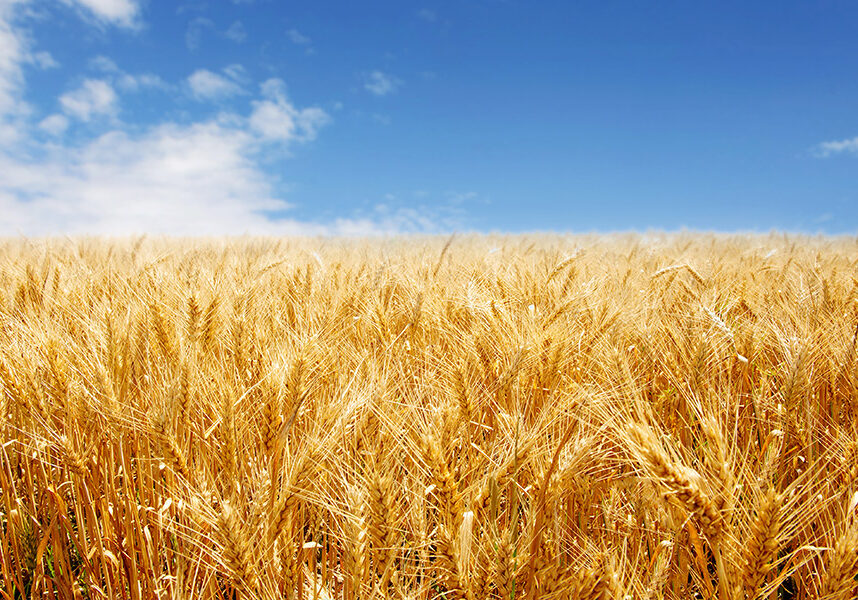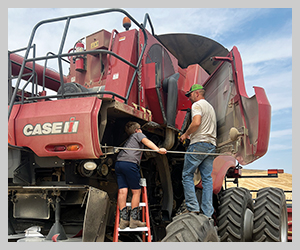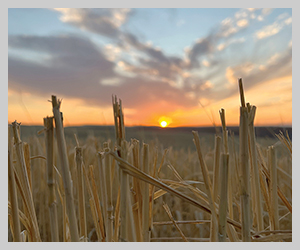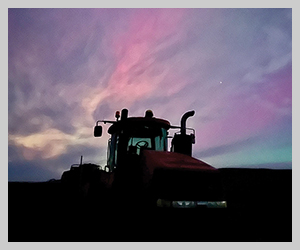
The second Agricultural Marketing and Management Organization’s (AMMO) February seminar was all about weeds, with presentations by three regional experts: Drew Lyon, Ian Burke, and Doug Finkelnburg.
Food for the dinosaurs

Lyon, a professor and Endowed Chair Small Grains Extension and Research, Weed Science, at Washington State University (WSU), went back in time, way back, in his presentation on Equisetums, specifically smooth scouringrush.
“It’s been around for a long time,” he said. “It helped feed the dinosaurs and gives us coal and oil today.”
Smooth scouringrush biology includes:
- All Equisetum species are nonflowering perennials.
- Stems are deciduous and emerge in spring.
- Overwinters by rhizomatous roots, reproduces sexually by spores, reproduces asexually by rhizomes, and most stems are fertile.
- May grow to be four feet tall.
- Leaves are greatly reduced to small scales and arranged in true whorls. Leaves are not photosynthetic.
- Stems are rigid, hollow, and jointed. Photosynthesis occurs in stems, which have a high silica concentration. Indigenous populations used the stems to scour surfaces, hence the name “scouringrush.”
- Spores are produced in strobili, which is a cone-shaped structure at the tip of the stem, and are relatively unimportant for the spread of Equisetum.
- It has an extensive, multitiered root system. Lateral roots can grow up to 20” per growing season.
- The rhizome system is much more effective for reproduction, and soil disturbance moves rhizomes, increasing the lateral spread.
- Deep growth allows plants to survive disturbances, such as tillage, fire, drought, etc. The root system is so persistent that Equisetum species were the first to recolonize Mount St. Helens after the eruption of 1980.
- It prefers moist places.
In Eastern Washington, the wide-spread adoption of chemical-fallow systems has allowed smooth scouringrush to expand its habitat from field margins and roadsides. Lyon said the weed is often found in draws and flats that are traditionally wetter, but it can also be found on slopes that he suspects “aren’t as dry as you might think.”
Historical control methods for smooth scouringrush include extensive tillage and chlorsulfuron, a Group 2 herbicide and the active ingredient in Glean and one of the active ingredients in Finesse, which contains both chlorsulfuron and metsulfuron (Group 2). Unfortunately, chlorsulfuron has a long soil residual that limits rotation to pulse crops and canola. Lyon and his team have been running trials across the region to test other herbicides, mixes, and application timing. So far, the only other herbicide they have found that reduces stem densities one or two years after application is glyphosate. His recommendation is to use a high rate of glyphosate (64 to 96 ounces/acre of RT3 or equivalent) and an organosilicone surfactant. The glyphosate should not be applied during hot, dry weather. Glyphosate has no soil residual activity and no crop rotation restrictions.
The good news, however, is that smooth scouringrush isn’t very competitive, particularly with winter wheat. Lyon said he tends to see problems in winter wheat when the wheat isn’t doing very well. In those cases, he recommended looking at soil pH or drainage.
“If you can get your wheat growing better, that may help with smooth scouringrush,” he said. “Smooth scouringrush is going to be a formidable problem. It doesn’t do much if you just take it off the top, and you will need more than one year (of control). You will need to win many battles with perennial weeds to win the war.”
Weed management

Burke, a professor of weed science and the R.J. Cook Endowed Chair of Wheat Research at WSU, summarized the current status and future prospects for weed management:
- Weed management is ripe for disruption, and growers should be looking for new ways to use chemical technology.
- Wheat growers have no linkage to weed biology for decisions.
- There has never been a more important time to know what active ingredients are in the products being applied as many of them are becoming generic, and there might be a more cost-effective choice.
- Regional weed scientists are focusing on a variety of cultural and mechanical inputs for weed management, but all of them are incremental, time consuming, and potentially expensive, hazardous, or risky to implement.
“None of the new herbicides are as effective as the tools you have currently, and none of them will be priced in a way you will be happy with,” he said, adding that from a corporate development standpoint, U.S. wheat is a minor market compared to corn and soybeans, and the Pacific Northwest (PNW) wheat industry is unique. “(Other wheat-growing regions) have different weeds, rotations, needs. We are at the end of the line for herbicide development.”
In the PNW, weed research is focused on understanding weed biology, how weed seed is spread through farming operations, and using weed-sensing sprayers as a means of weed management. “A lot of the things we are thinking about don’t look like herbicide management,” he said. “We are trying to understand what’s driving some of the problems we are seeing.”
The weed seedbank is a particular area of focus for PNW weed researchers. Burke said researchers know that there’s a lot of weed seed movement, and what affects a crop also affects weed seed. The difference is the nearly unimaginable amount of weed seeds in the environment — potentially hundreds of millions of seeds per acre.
“We are talking about huge numbers, so even a huge reduction in weed seed means there is a huge amount still there,” he explained. “We also know that if you miss just one year (of management), weeds will produce enough seed to replace years’ worth of seeds in a single season. We can’t afford to fail.”
While seedbank dormancy is complicated, understanding it may reveal new weed management options. Burke said there are three types of dormancy: physiological, which is based on light; physical, which is the seed coat; and morphological, which is embryo development. The dormancy type can vary within the same weed species, and weeds can combine the types of dormancy.
“Knowledge of dormancy mechanisms is a powerful tool. If you can trap the weed into being one way or another and knowing what that one way or another is, it’s one of the key essential ingredients for designing rotation systems,” he said. “You can kind of predict the outcome for a particular weed depending on what you want to do with it. If you know it needs scarification to germinate, how can you use that?”
Burke wrapped up his presentation by talking about weed-sensing sprayers. Some of the potential benefits include:
- There can be a reduction in herbicide use on small or scattered weed populations in areas treated repeatedly prior to planting.
- They reduce the cost of using more expensive (and usually more effective products) in fallow and preplant burn-down applications.
- They may improve integrated herbicide management affordability.
Some of the negatives include:
- Image-based sensor systems are extremely processor intensive and come at a cost, and you need a weed-image database.
- Reflectance-based weed sensing sprayer systems are expensive, they can miss small weeds, and they can cause overuse if the system is miscalibrated or the herbicide rate is too concentrated.
The Herbicide Resistance Initiative

Finkelnburg is an area Extension educator in cropping systems with the University of Idaho. He is part of the Pacific Northwest Herbicide Resistance Initiative (PNWHRI), a regional effort focused on creating a coordinated, interdisciplinary, systems-based approach to managing herbicide resistance in weeds that is regional in scope and long-term in impact.
The PNWHRI recently completed a grain producers’ weed problem survey that got feedback from about 100 producers representing more than 364,000 acres in Idaho, Oregon, and Washington. Finkelnburg said they found that about a quarter of producers were managing multiple cropping systems, like annual cropping and wheat-fallow or irrigated cropping and wheat-fallow. Forty percent of respondents reporting using multiple tillage practices, like no-till and conservation tillage, on their operations. In Washington, approximately 111,000 acres were represented in the survey. The top five weeds Washington producers were most worried about were downy brome, Russian thistle, Italian ryegrass, prickly lettuce, and mayweed chamomile.
More information about the PNWHRI is available at pnwhri.org. The website is new and is used mostly for contact information at this point, but the group is working on making some short videos and intends to use the website as a public-facing space to bring products such as decision support tools and novel weed management research information to growers.












